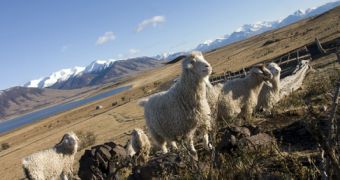Recent news informs us that a group of cashmere manufacturers and traders will from now on be allowed to market their products as being “Wildlife Friendly,” thanks to a new certification they received from the Wildlife Friendly Enterprise Network.
Apparently, these cashmere producers, who live and carry on with their businesses in Argentina’s Patagonian Steppe, have invested significant efforts in making sure their daily activities do not negatively impact on the already fragile ecosystems found in this part of the world.
More precisely, they wished to make sure that their goat herding does not rob local animal species of various natural resources they need in order to avoid becoming endangered, and even extinct.
The Wildlife Conservation Society informs us that the Patagonian Steppe presently houses numerous animal species such as guanacos (i.e. a type of camel), rheas (i.e. a species of flightless birds), Andean cats, and countless other.
Therefore, making sure that goat-herding in these areas does not affect local biodiversity is something all cashmere producers need to take into consideration when deciding to manufacture and sell this highly appreciated type of wool.
According to the same source, the cashmere producers who recently received this green certification had to abide by several environmental standards.
Thus, they had to make sure that the number of goats that they allow to graze in various regions does not place too much strain on natural resources; as well as this, the goats need be in good health, so as to make sure that wild animals do not accidentally contract various diseases from them.
Furthermore, interaction with wild animal species inhabiting these grazing areas must be limited as much as possible.
Commenting on these recent developments in the cashmere industry, Andres Novaro from the Wildlife Conservation Society made a case of how, “This certification validates the efforts of the cooperative members, who have made significant sacrifices in trying to minimize the impact of cashmere production on this magnificent yet fragile landscape. Our recent success will serve as an example of how local businesses can be balanced with sustainable practices.”

 14 DAY TRIAL //
14 DAY TRIAL //